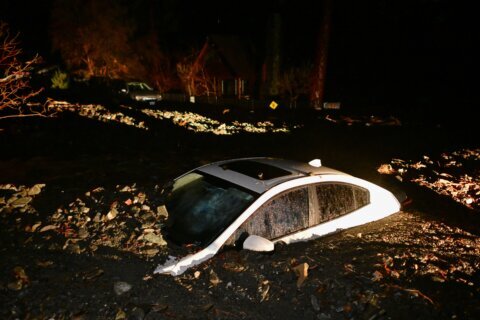WASHINGTON — The National Weather Service, headquartered in Silver Spring, Maryland, is about to get a big boost from up above.
On Nov. 10, the first of the National Oceanic and Atmospheric Administration’s Joint Polar Satellite System is scheduled to launch from an air base in California.
Polar satellites have played a large role in improving weather forecasts in recent years, and the goal and expectation is that this new series will do even more to improve forecasts up to seven days out.
“The most critical observations for us to inform the weather models are the polar satellites,” said Joseph Pica, director of the National Weather Service Office of Observation.
The new polar satellites will orbit around the earth 14 times a day “at about 500 miles above the earth, and gather humidity and temperature data and we feed those into our models so we can forecast out what’s going to happen three to seven days from now.”
Pica says that the polar satellites currently in space were utilized on a regular basis at the peak of the hurricane season, when three major hurricanes made landfall in the United States.
“We saw them coming,” said Pica. “We utilized the polar satellites to help forecast what their path would be and how much they would intensify.”
“Those kinds of things allowed, for example, the governor of Florida (Rick Scott) to issue a state of emergency six days before Hurricane Irma made landfall, and position critical resources to respond and prepare.”
But these satellites can do more than just track hurricanes.
As California still tries to rebuild after a series of devastating wildfires in recent weeks, this new satellite system will have the ability to help state and federal agencies get resources where they’re going to be needed ahead of time.
“There’s an imager on this satellite system that’s able to take very detailed images each day to show the forest service where the fire is, where they’re going, what direction they’re headed,” Pica said.
“We’re trying to be as reliable and provide as much confidence as we can for that three-to-seven day forecast to inform FEMA and emergency managers to be able to take action to be able to respond to any type of extreme weather events.”








